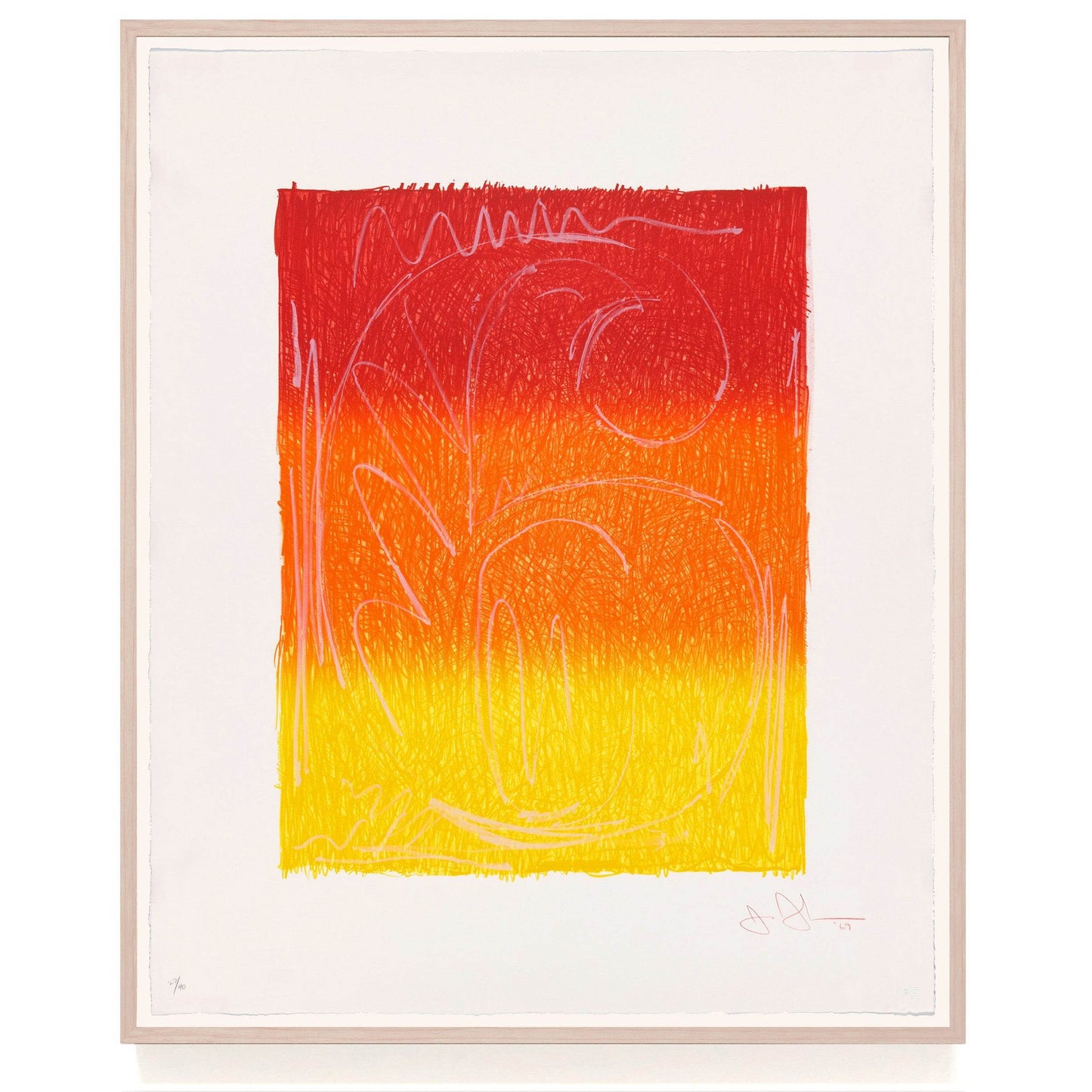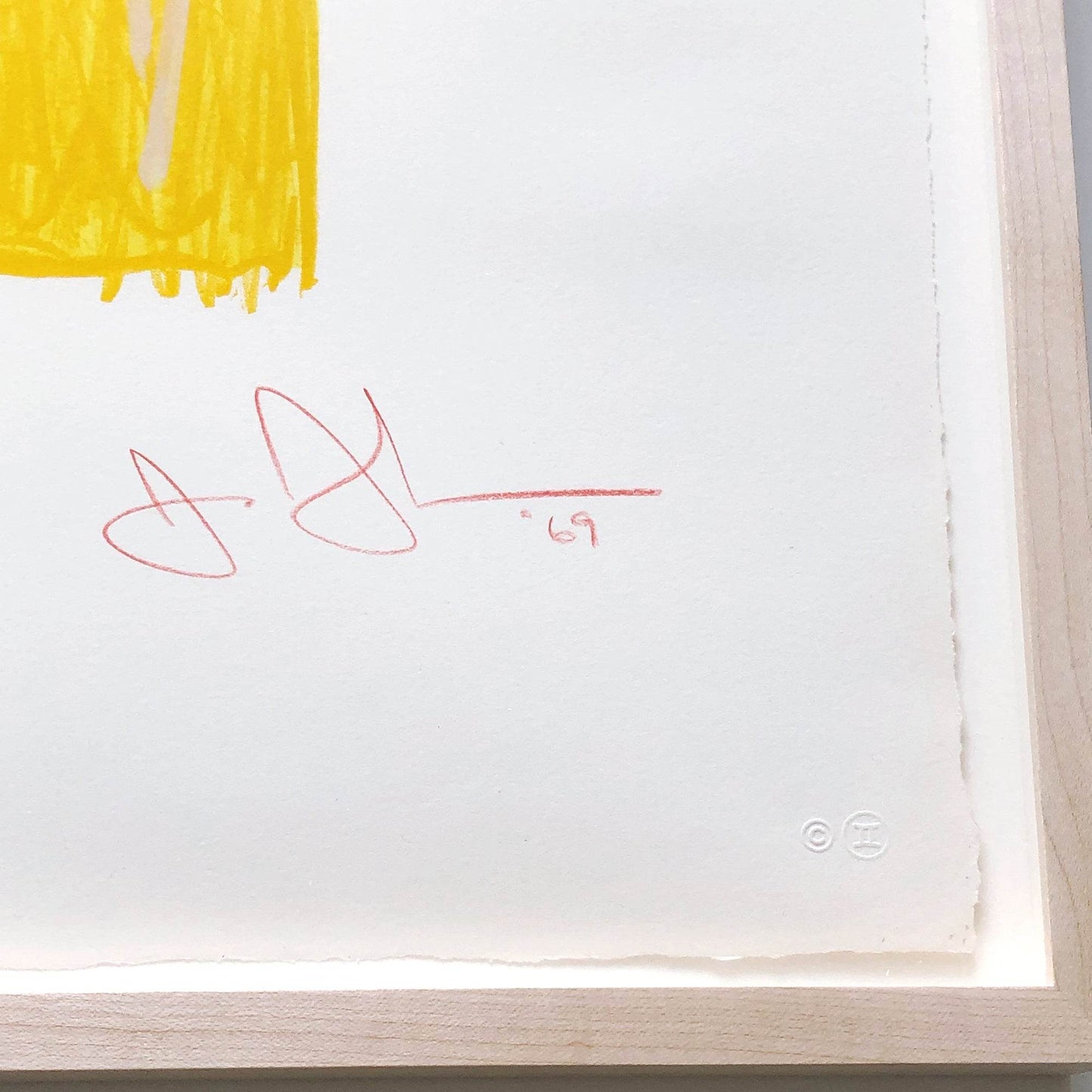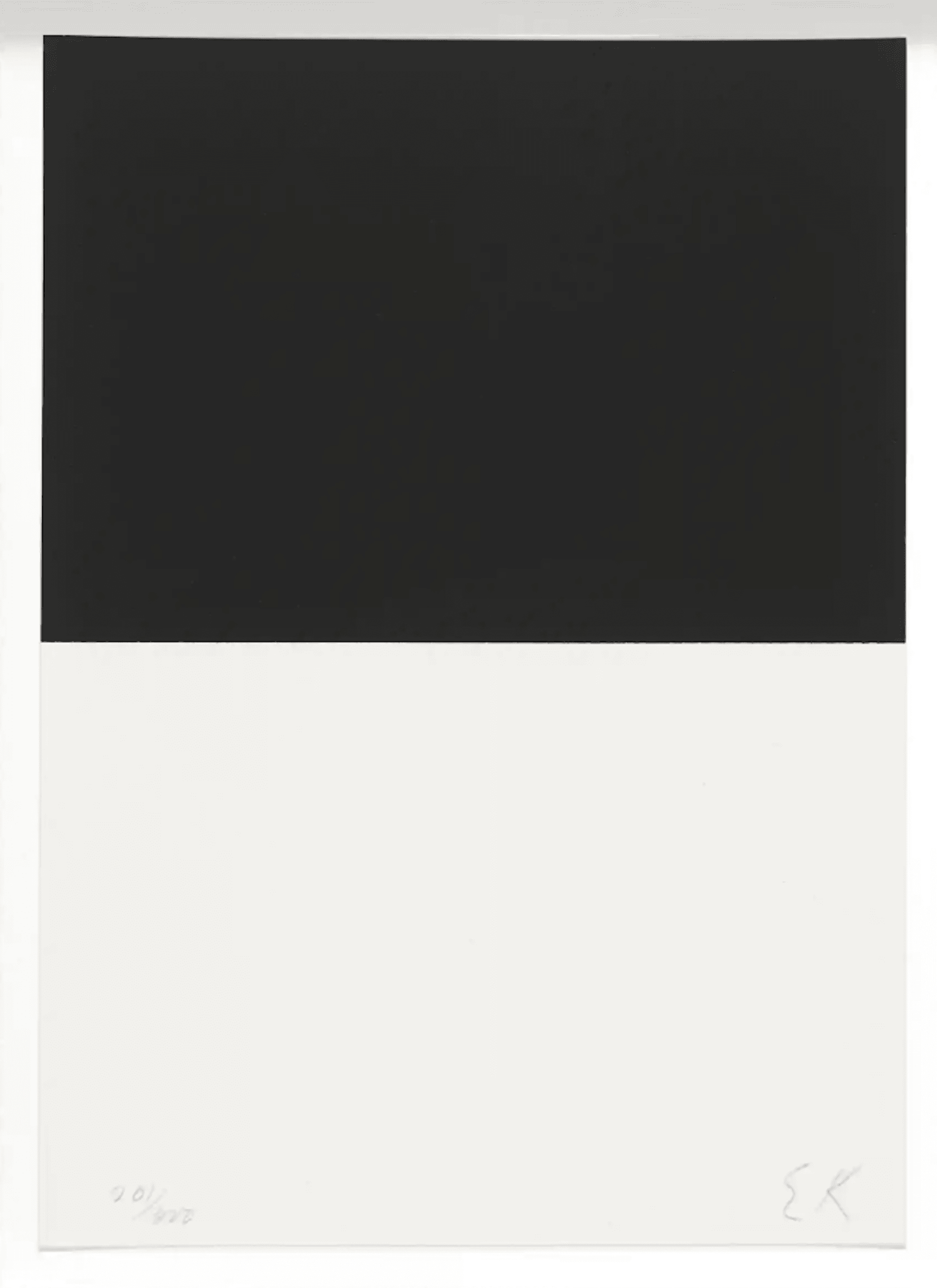Jasper Johns Figure 6 (ULAE 65), 1969 Original Signed Numbered Color Lithograph
Jasper Johns Figure 6 (ULAE 65), 1969 Original Signed Numbered Color Lithograph
Couldn't load pickup availability
Share
Jasper Johns
Figure 6 (ULAE 65), 1969
color lithograph on Arjomari paper
image: 27 ½ x 21 ¼ inches
paper: 38 x 31 inches
frame: 42 x 35 inches
edition: 40 + 12 AP's, 1 PP
signed & dated "J.Johns 1969" in red pencil lower right recto
numbered in pencil lower left recto
published by Gemini G.E.L., Los Angeles, with their blindstamp and inkstamp on reverse
Condition
Pristine condition, the colors fresh, the margins full.
Floated archival blonde wood frame with UV plexiglass.
Literature
Michael Crichton, Jasper Johns, Harry N.Abrams, Inc./The Whitney Museum of Art, New York, 1977, plate 139, n.p., another impression reproduced.
Carlo Huber, Jasper Johns: Graphik, Verlag Klipstein und Kornfeld, Bern, 1970, plate 110, n.p., another impression reproduced in color.
Shigeo Chiba, Jasper Johns Prints Exhibition 1960–1989, Tokyo, 1990, Japan Art and Culture Association/Kokusai Geijutsu Bunka Shinkokai, n.p., plate 8, another impression reproduced.
Michel Butor, Kathleen Slavin, Jasper Johns Gravures Dessins 1960-1991, Foundation Vincent Van Gogh, 1992, no. 7, pg. 52, another impression reproduced in color.
Richard Field, The Prints of Jasper Johns 1960-1993: A Catalogue Raisonne, ULAE, New York, 1994, Catalogue Reference ULAE 65, n.p., another impression reproduced full-page color.
Susan Lorence, Technique and Collaboration in the Prints of Jasper Johns, Castelli Gallery, New York, 1996, Catalogue Reference 12g, n.p., another impression reproduced in black and white.
Roberta Bernstein, Carter E. Foster, Jasper Johns Numbers, Cleveland Museum of Art, 2003, pg. 79, another impression reproduced in color.
Carlos Basualdo, Scott Rothkopf, Jasper Johns Mind/Mirror, Whitney Museum of American Art, 2021, another impression reproduced plate 46, pg. 86.
Exhibited
Kunsthalle, Bern, Die Grafik Jasper Johns, April 17-May 29, 1971, another impression exhibited.
Whitney Museum of America Art, New York, Jasper Johns, October 18, 1977-January 22, 1978, another impression exhibited.
The Seibu Museum of Art, Tokyo, Prints Exhibition 1960–1989, Traveled to The Seibu Department Store, Isetan Museum of Art, Tokyo, April 26th—May 15th, 1990, Isetan Department Store, Niigata, June 7-19, 1990, Isetan Department Store, Urawa, July 18-24, 1990, Isetan Department Store, Matsudo, August 9—August 14, 1990, Isetan Department Store, Shizuoka, August 23—August 28, 1990, another impression exhibited.
Foundation Vincent Van Gogh, Arles, Jasper Johns Prints and Drawings from the Castelli collection, July 4-September 30, 1992, another impression exhibited.
Jasper Johns Mind/Mirror, Whitney Museum of American Art and the Philadelphia Museum of Art.
Museum Collections
The National Gallery of Art, Washington D.C.
The Museum of Modern Art, New York
Walker Art Center, Minneapolis
National Gallery of Art, Australia
San Francisco Museum of Modern Art, San Fransisco
The Metropolitan Museum of Art, New York
Harvard University Art Museums, Cambridge
About Jasper Johns
Since the mid-1950's, Jasper Johns has reworked key motifs—Flags, Targets, Maps, the Alphabet and Numbers. Jasper Johns depicts subjects that "the mind already knows" but overlooks due to constant exposure. Published by Gemini G.E.L., Jasper Johns' color Numeral 6 elevates the number, its form derived from a commercial stencil, to a striking, orange-yellow hued portrait.
Johns’s basic instructions to himself, written in his sketchbook "Take an object. Do something to it. Do something else to it" reveal the overarching logic of his artistic approach.
For example, the lithographic stones and plates that Jasper Johns used to print his set of 10 Color Numerals, (ULAE 59-68), 1969 had been reworked from those used to produce the set of 10 Black Numerals, (ULAE 44-53), 1968, a series Johns created the previous year at Gemini GEL. Most single 0-9 number impressions are part of complete sets of 10 Numbers owned by museums and/or private collectors. As a result, there are not many single Jasper Johns Numbers impressions on the market, particularly in outstanding condition. Accordingly, this 1969 signed, dated and numbered Jasper Johns Number 6 color lithograph published five decades ago is not only a great value but also highly desirable and collectible.
Jasper Johns observations about printmaking:
"It’s the techniques that interest me. My impulse to make prints has nothing to do with my thinking it’s a good way to express myself. It’s more a means to experiment in the technique. What interests me is the technical innovation possible for me in printmaking." His fascination with the possibilities of printmaking and Gemini GEL’s commitment to innovation made for a successful working relationship, to which the lustrous Color Numerals are testament."
About Joseph K. Levene Fine Art, Ltd.
Before establishing Joseph K. Levene Fine Art, Ltd. in 1991, Joseph K. Levene was President/COO, Petersburg Press, Inc., the International publisher of limited editions by David Hockney, James Rosenquist, Howard Hodgkin, Roy Lichtenstein, Jim Dine, Frank Stella and Jasper Johns, including these iconic gems: 0-9 (ULAE 155), 1975, 0-9, Set of 10 Numbers (ULAE 156-165), 1975, Corpse and Mirror (ULAE 167), 1976, Target With Four Faces (ULAE 203), 1979, Target with Plaster Casts (ULAE 208), 1979-80 and many more.
A globally recognized authority on Jasper Johns, Joseph K. Levene Fine Art, Ltd. only buys and sells original Jasper Johns prints without condition issues, meaning we will NOT buy or sell any Jasper Johns print that is cleaned, repaired, reduced in size or over-matted. Joseph K. Levene Fine Art, Ltd. will NOT buy or sell Jasper Johns prints that are faded and/or have foxing, no matter how much of a bargain. Unlike auction firms and even many leading print dealers, Joseph K. Levene Fine Art, Ltd. will NEVER buy or sell any Jasper Johns print that is over-matted as the color of the paper under the mat will ALWAYS be brighter than the paper area exposed to light.
View Jasper Johns Prints at Joseph K. Levene Fine Art, Ltd.






View Available Works by Artist
-

Andy Warhol
Shop guaranteed authentic blue-chip Andy Warhol Pop Art including original and unique 50's...
-

Jasper Johns Prints
Jasper Johns ranks among the world's greatest printmakers, often compared to Pablo...
-

Jeff Koons
Shop guaranteed authentic museum quality Jeff Koons prints & multiples at Joseph...
-

Cindy Sherman
Shop guaranteed authentic Cindy Sherman signed, dated and numbered museum quality limited editions...
-

Tony Rosenthal
Shop guaranteed authentic Tony Rosenthal unique maquette sculptures from many of the artist’s...
-

Richard Pettibone
Shop guaranteed authentic unique Richard Pettibone Pop Art Appropriations at Joseph K. Levene...
-

Ellsworth Kelly
Shop guaranteed authentic Ellsworth Kelly limited edition prints and ephemera at Joseph...
-

Damien Hirst
Shop guaranteed authentic blue-chip Damien Hirst signed and numbered limited edition prints and...
-

Tom Wesselmann
Shop guaranteed authentic Tom Wesselmann signed and numbered museum quality Pop Art...
-

Art Books & Catalogues
Shop guaranteed authentic art books & catalogues at Joseph K. Levene Fine...
-

Prints & Multiples
Shop guaranteed authentic blue-chip original prints & multiples at Joseph K. Levene...



















